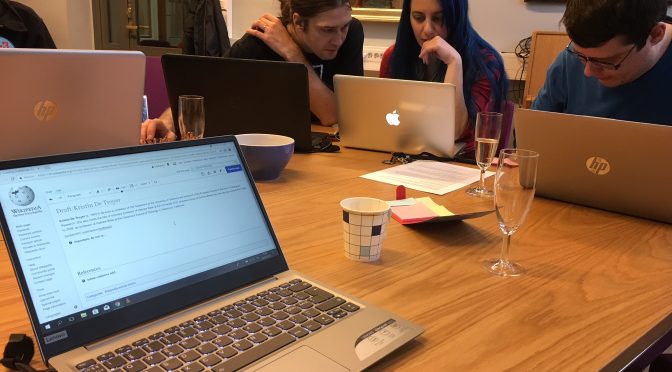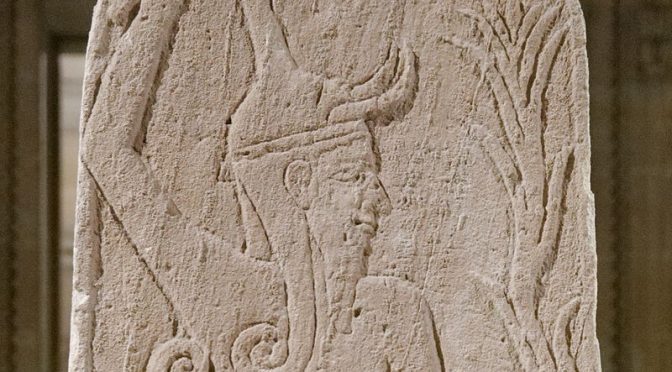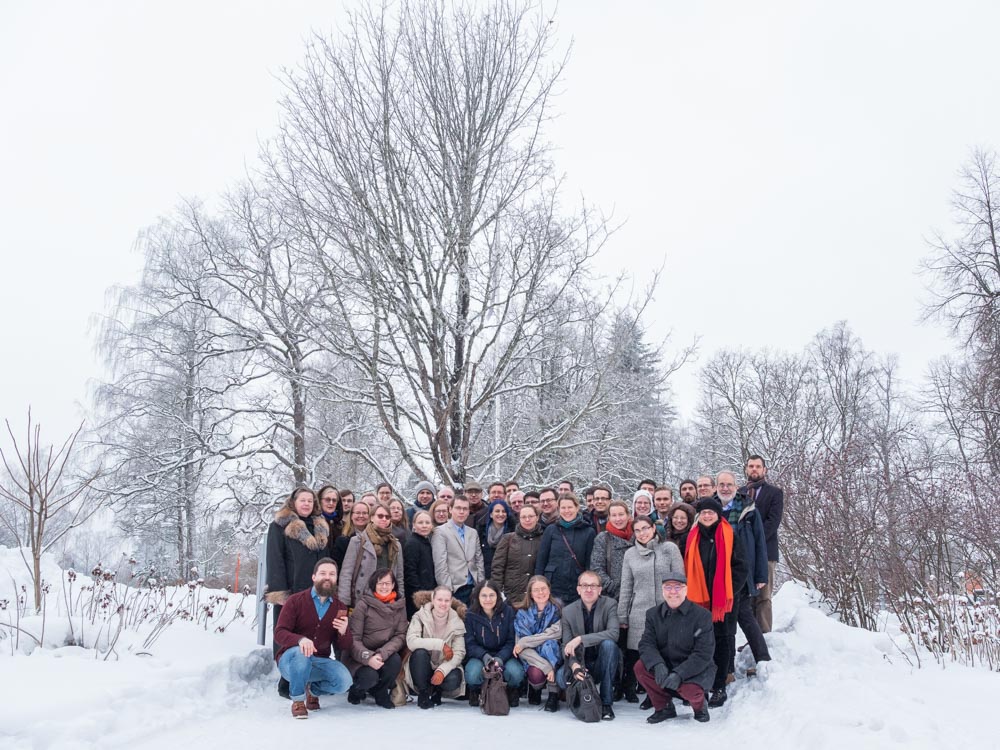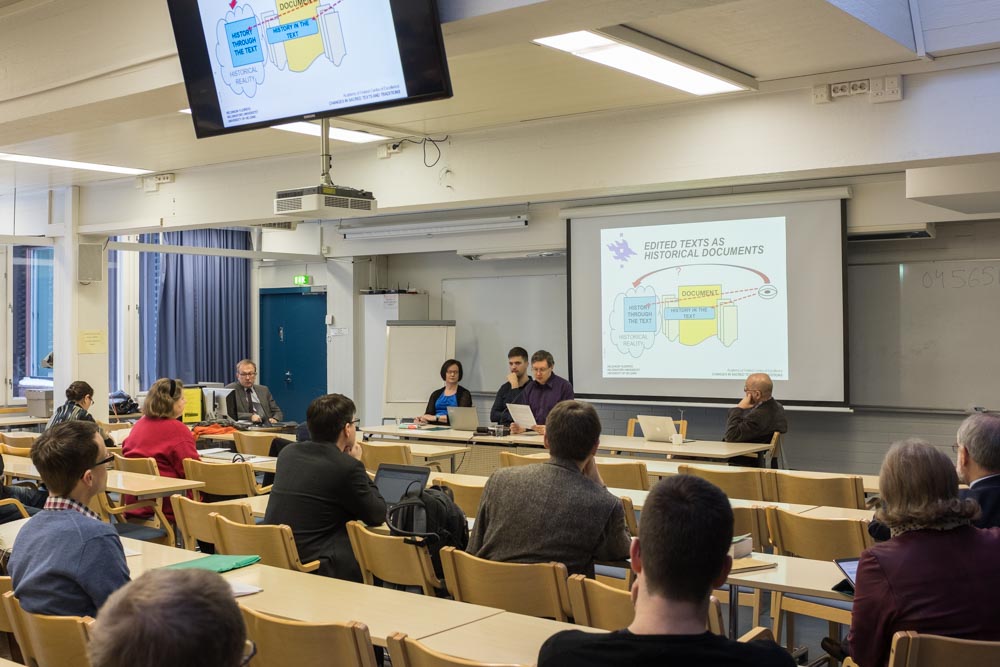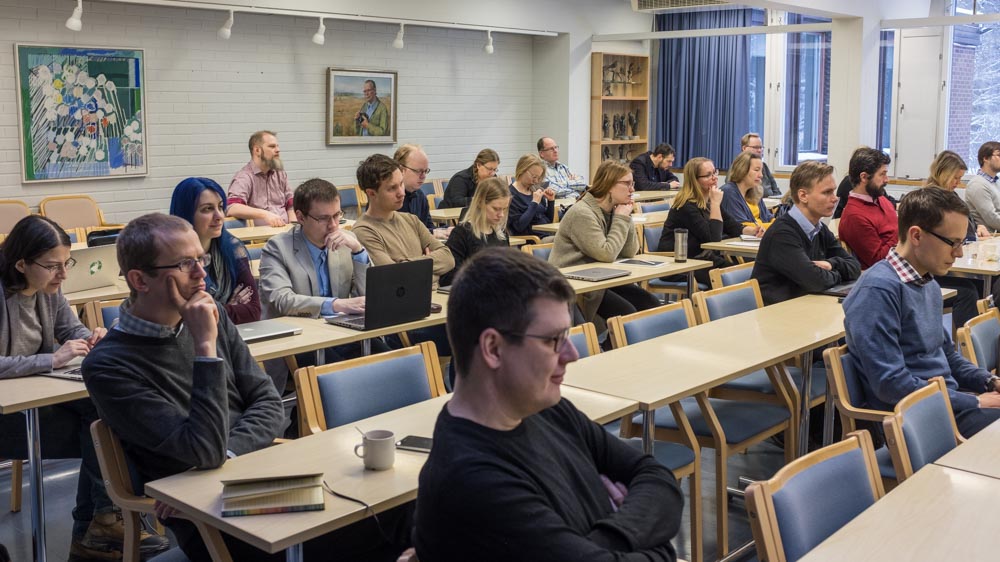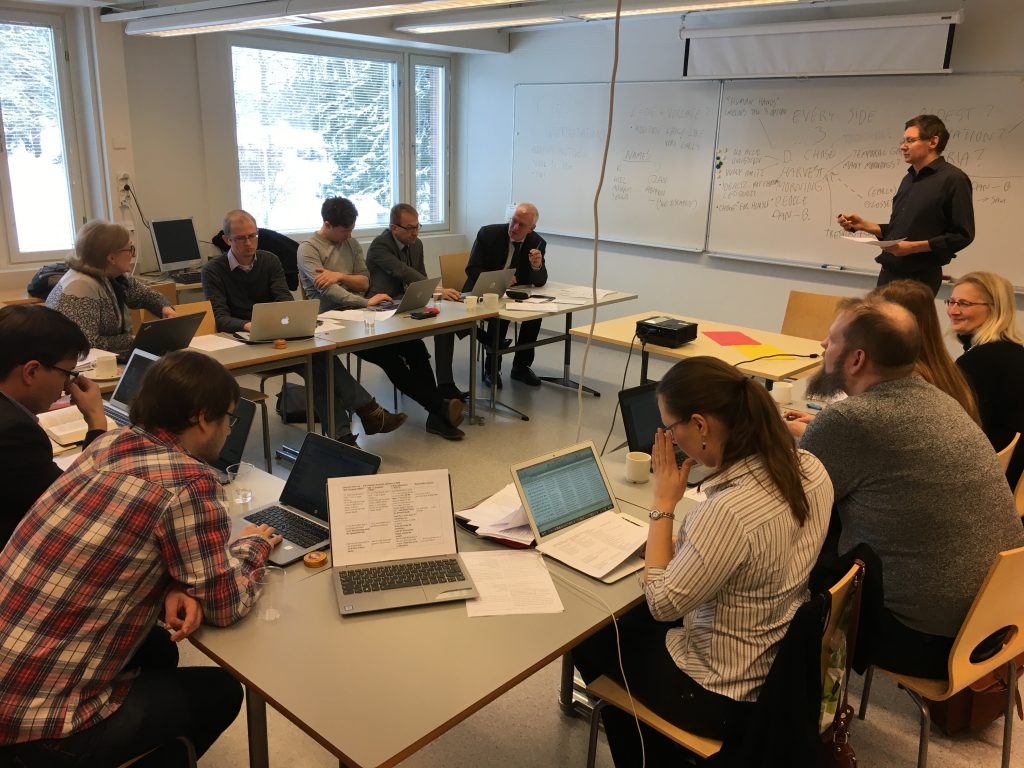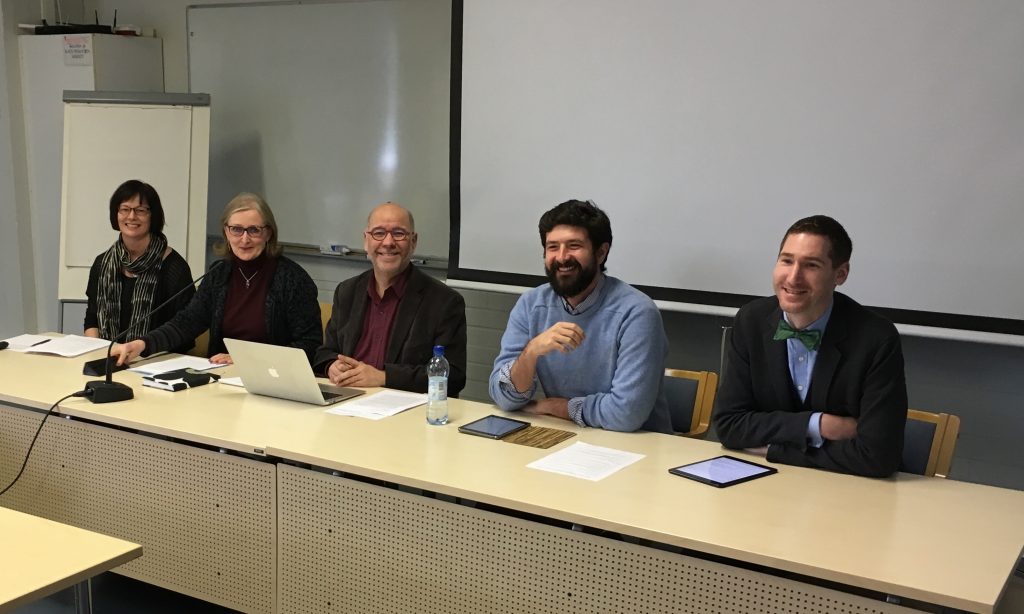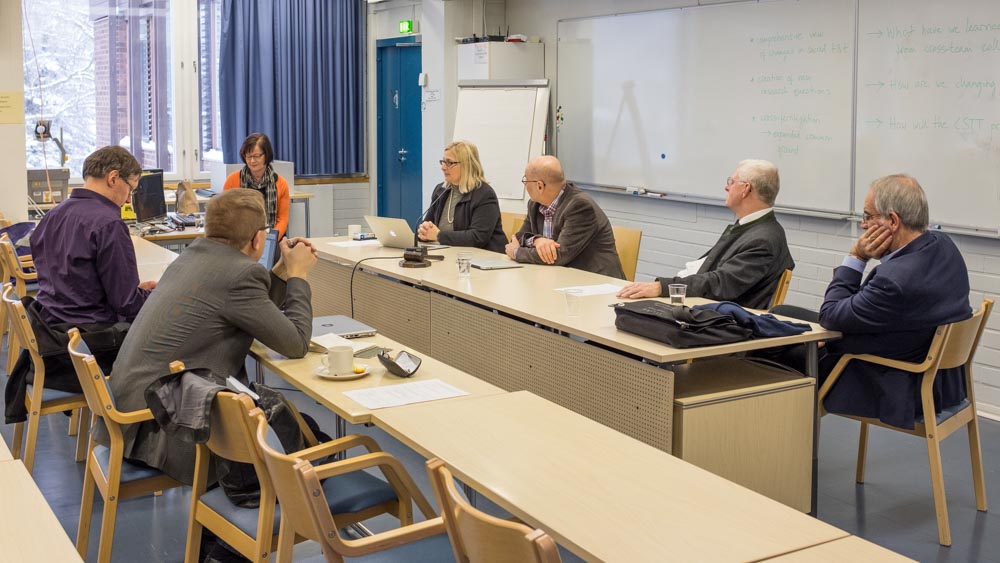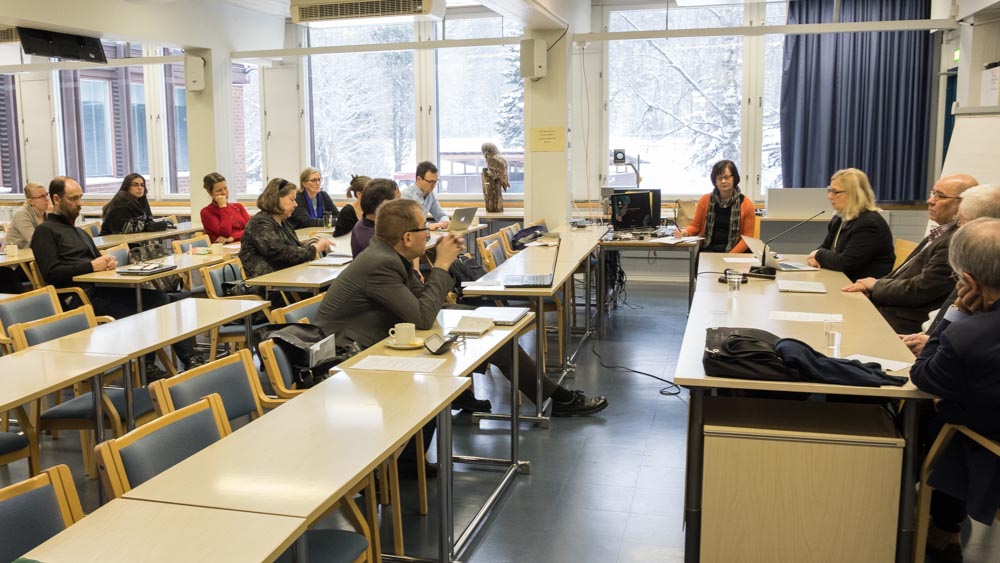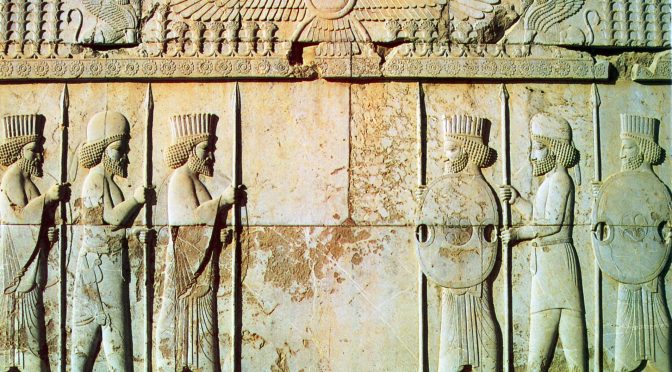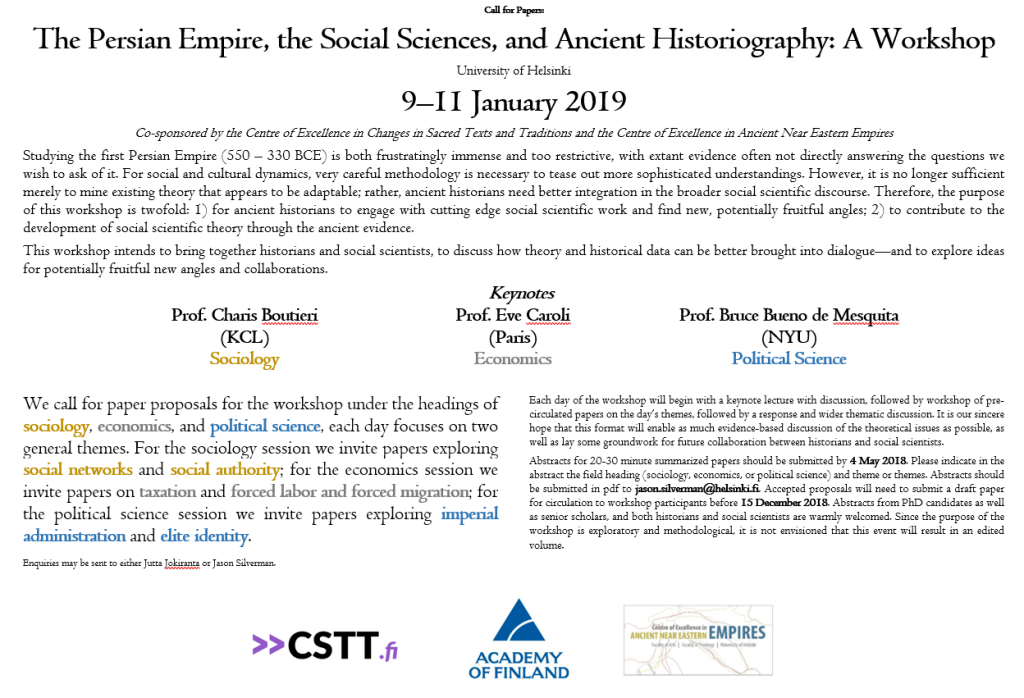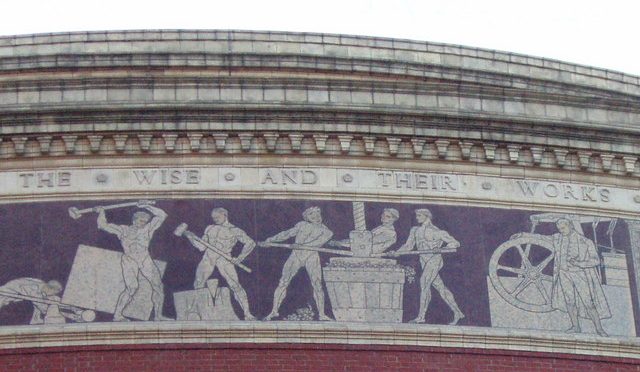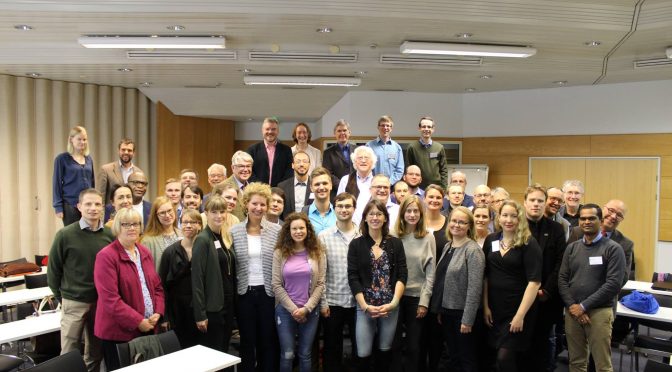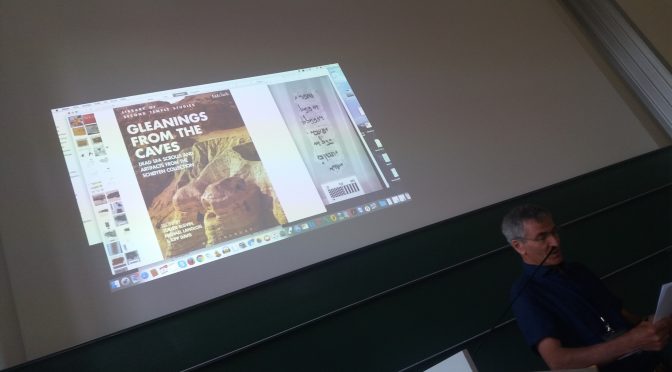This year, the combined annual meeting of the Society of Biblical Literature and American Academy of Religions takes place November 18–21 in Boston (Massachusetts, USA).
We have, once again, made the scheduling for your annual experience easier by gathering together all contributions from our Finland-based Centre of Excellence in Changes in Sacred Texts and Traditions to these annual meetings. The contributions are grouped under four headings corresponding to the different research teams in our centre. The list includes contributions from our full and associate members. You can find the abstracts of the papers and more information on the sessions by using the excellent AAR/SBL online program book and mobile planner.
Prior to the AAR/SBL annual meeting, there is also the annual meeting of the American Schools of Oriental Research in Boston, which takes place November 15-18 in the Weston Bastin Waterfront hotel. CSTT contributes to that meeting too!
See you all in Boston!
TEAM 1. Society and Religion in the Ancient Near East
CSTT-director Martti Nissinen is a member of the editorial board S19-250 Writings from the Ancient World.
Nov 19 – 9:00 – 11:30 AM
Martti Nissinen: Presiding in Hebrew Scriptures and Cognate Literature; Pentateuch, theme: Empirical Models Challenging Biblical Criticism.
Nov 20 – 1:00 – 3:30 PM
Martti Nissinen: “Healing Prophets at the Interface of Divination and Magic” in Hebrew Scriptures and Cognate Literature
Nov 20 – 1:00 – 3:30 PM
Izaak J. de Hulster: “The end(s) of the earth: an iconographic contribution to ancient geography and the visualisation of the ‘biblical world map'” in Ancient Near Eastern Iconography and the Bible.
Nov 17 – 8:20 – 10:00 AM (ASOR)
Raz Kletter: Chair in Meeting the Expenses: Ancient Near Eastern Economies I.
Nov 17 – 10:40 – 12:25 AM (ASOR)
Raz Kletter: “Major Changes on the Road to Small Change: Scale Weights, Hoards, and Modes of Exchange” in Meeting the Expenses: Ancient Near Eastern Economies II.
Nov 18 – 9:00 – 11:30 PM
Jason Silverman: “The Identity of Zemah in Zechariah” in Book of the Twelve Prophets.
Nov 20 – 1:00 – 3:30 PM
Jason Silverman: “Josephus and the Supposed Rise of the Priesthood in Yehud” in Literature and History of the Persian Period.
Nov 17 – 8:20 – 10:20 AM (ASOR)
Saana Svärd and Aleksi Sahala: “Am I Seeing Things? Language Technology Approach to ‘Seeing’ in Akkadian” in Senses and Sensibility in the Near East I.
Nov 20 – 1:00 – 3:30 PM
Saana Svärd: “Women in Temples and Cult of the Neo-Assyrian Empire” in Levites and Priests in History and Tradition.
Nov 17 – 4:20 – 6:20 PM (ASOR)
Gina Konstantopoulos: “Public and Private: the Role of Text and Ritual in Constructing and Maintaining Protected Spaces in Mesopotamia” in Ambiguity in the Ancient Near East: Mental Constructs, Material Records, and Their Interpretations III.
Nov 20 – 1:00 – 3:30 PM
Sanna Saari: “‘With His Bare Hands’: Iconography of Unarmed Samson in Judges 14:5–6” in Ancient Near Eastern Iconography and the Bible.
Nov 17 – 4:20 – 6:20 PM (ASOR)
Helen Dixon: “The ‘Look’ and ‘Feel’ of Levantine Phoenician Sacred Space” in Art Historical Approaches to the Near East II.
Nov 17 – 7:00 – 8:15 PM (ASOR)
Helen Dixon and Geoff Emberling: Presiding at the ASOR Programs Committee.
Nov 19 – 5:30 – 7:30 PM
Helen Dixon, Hanna Tervanotko, Sarah Shectman, Jacqueline Vayntrub, and Krista Dalton: “Wiki, Women, and Bible Workshop and Happy Hour” – Wikipedia editing session hosted by the Committee on the Status of Women in the Profession, the Student Advisory Board, and Vandenhoeck & Ruprecht.
TEAM 2. Text and Authority
Team 2 leader Anneli Aejmelaeus is a member of the editorial board S19-105a TC: A Journal of Biblical Textual Criticism.
Nov 20 – 1:00 – 3:30 PM
Anneli Aejmelaeus: Presiding in Textual Criticism of Samuel-Kings.
Nov 20 – 4:00 – 6:30 PM
Anneli Aejmelaeus: “Hexaplaric Recension and Hexaplaric Readings in 1 Samuel” in Textual Criticism of Samuel-Kings.
Nov 20 – 4:00 – 6:30 PM
Jessi Orpana: “The Transmission of Creation Traditions in the Late Second Temple Period” in Transmission of Traditions in the Second Temple Period.
Nov 19 – 9:00 – 11:30 PM
Katja Kujanpää: “Uninvited Metalepsis? Paul’s Diverse Ways of Receiving the Original Context of Quotations from the Pentateuch” in Intertextuality in the New Testament.
Nov 18 – 9:00 – 11:30 PM
Marika Pulkkinen: “Paul’s Quoting Technique in Comparison to Later Rabbinic Methods” in Intertextuality in the New Testament.
Nov 18 – 1:00 – 3:30 PM
Miika Tucker: “Further Lexical Studies Regarding the Bisectioning of Septuagint Jeremiah” in International Organization for Septuagint and Cognate Studies.
TEAM 3. Literary Criticism in the Light of Documented Evidence
Team 3 leader Juha Pakkala is a member of the editorial board S19-105a TC: A Journal of Biblical Textual Criticism.
Nov 18 – 4:00 – 6:30 PM
Juha Pakkala: “The Origin of the Earliest Edition of Deuteronomy” in Book of Deuteronomy.
Nov 19 – 9:00 – 11:30 AM
Juha Pakkala: “Empirical Models and Biblical Criticism” in Hebrew Scriptures and Cognate Literature; Pentateuch.
Nov 20 – 1:00 – 3:30 AM
Mika Pajunen: “Differentiation of Form, Theme, and Function in Psalms and Psalm Collections” in Transmission of Traditions in the Second Temple Period.
Nov 20 – 4:00 – 6:30 AM
Mika Pajunen: “The Textual Criticism of the Text of Kings and Chronicles in the Hebrew Text of Ben Sira” in Textual Criticism of the Hebrew Bible.
Nov 18 – 4:00 – 6:30 AM
Francis Borchardt: “The Framing of Female Knowledge in the Prologue of the Sibylline Oracles” in Pseudepigrapha.
Nov 21 – 9:00 – 11:30 AM
Francis Borchardt: Presiding in Hebrew Bible and Political Theory.
Nov 19 – 1:00 – 3:30 AM
Ville Mäkipelto: “Does the Samaritan Book of Joshua Provide Evidence for the Textual History of Josh 24?” in Textual Criticism of the Hebrew Bible.
Nov 19 – 4:00 – 7:00 AM
Timo Tekoniemi: “Identifying kaige and proto-Lucianic readings in 2 Kings with the help of Old Latin manuscript La115” in International Organization for Septuagint and Cognate Studies.
Nov 18 – 9:00 – 11:30 AM
Reinhard Müller: Respondent in Deuteronomistic History; Book of Deuteronomy, theme: Deuteronomy 1–3: The Beginning of History or the Introduction to a Separate Book?
Nov 20 – 1:00 – 3:30 AM
Reinhard Müller: “The Making of Composite Psalms: Documented Evidence, Hypothetical Cases, Methodological Reflections” in Transmission of Traditions in the Second Temple Period.
Nov 18 – 1:00 – 3:30 AM
Urmas Nõmmik: “Remarks on the Formation of the First Isaiah through Diachronic Poetological Lens” in Formation of Isaiah.
Nov 20 – 4:00 – 6:30 AM
Urmas Nõmmik: “The Ben Sira Masada Scroll and the Transmission Process of the Book of Job” in Transmission of Traditions in the Second Temple Period.
TEAM 4. Society and Religion in Late Second Temple Judaism
Nov 19 – 9:00 – 11:30 AM
Jutta Jokiranta: Presiding at Mind, Society, and Religion in the Biblical World, theme: Supercooperators: Costly Signaling Theory and Its Applications to Biblical Studies.
Nov 20 – 1:00 – 3:30 AM
Raimo Hakola: “Jesus and the Galilean Poor in the Context of Ancient Representations of Poverty” in Historical Jesus.
Nov 16 – 2:00 – 4:00 AM (ASOR)
Tine Rassalle, Rick Bonnie, and Annalize Rheeder: “Architecture and Stratigraphy of the Horvat Kur Synagogue Area” in The Synagogue at Horvat Kur.
Nov 20 – 9:00 – 11:30 AM
Jessica Keady: “An Initial Exploration of Positioning Theory and Gender in the War Scroll” in Mind, Society, and Religion in the Biblical World.
Nov 20 – 1:00 – 3:30 AM
Jessica Keady: “Masculinities, War, and Purity: The Positions of Non-Priestly Men in the Dead Sea Scrolls” in Levites and Priests in History and Tradition.
Nov 18 – 1:00 – 3:30 AM
Elisa Uusimäki: “Wisdom, Revelation, and Textuality: Insights from Ancient Judaea” in Prophetic Texts and Their Ancient Contexts.
Nov 20 – 4:00 – 6:30 AM
Elisa Uusimäki and Anna-Liisa Tolonen: “4 Maccabees: Ancestral Perfection in the Roman Diaspora” in Hellenistic Judaism.
Nov 18 – 1:00 – 3:30 AM
Hanna Tervanotko: Presiding at Prophetic Texts and Their Ancient Contexts, theme: Textualization of Revelation.
Nov 19 – 9:00 – 11:30 AM
Hanna Tervanotko: “‘They opened the Book of Law’: Tracing Divinatory Use of Torah in 1 Maccabees” in Deuterocanonical and Cognate Literature.
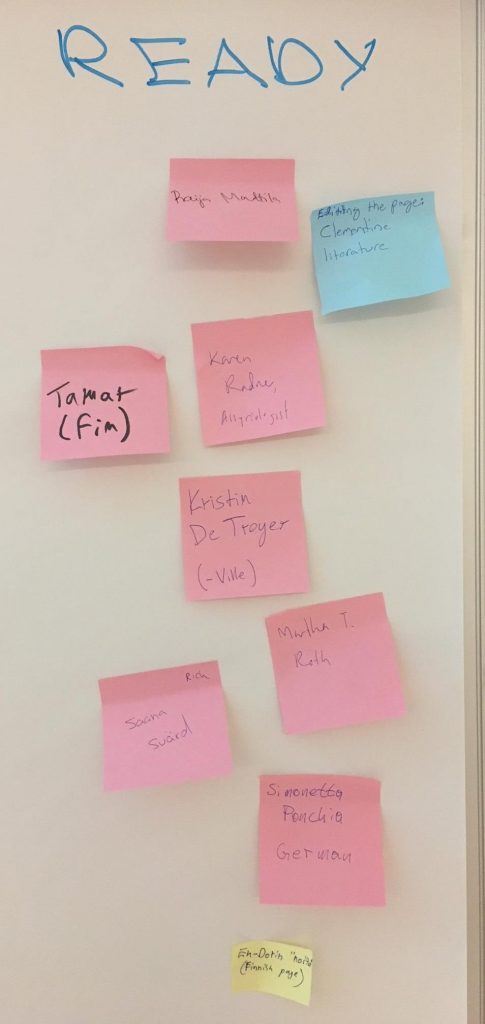 Wikipedia is a web-based encyclopedia that is based on the openly editable content. The Wikipedia project is supported by Wikimedia Foundation that owns the Wikipedia.org –domain, and e.g. exercises outreach and controls the servers. The Foundation does not edit the Wikipedia content, though, but the volunteers (that is, anyone with internet access and a Wikipedia username) are taking care of producing and editing texts. Updating and correcting the information on Wikipedia is an easy and effective way to spread rightful knowledge; Wikipedia is a heavily trusted tool among the greater public, pupils, reporters and students.
Wikipedia is a web-based encyclopedia that is based on the openly editable content. The Wikipedia project is supported by Wikimedia Foundation that owns the Wikipedia.org –domain, and e.g. exercises outreach and controls the servers. The Foundation does not edit the Wikipedia content, though, but the volunteers (that is, anyone with internet access and a Wikipedia username) are taking care of producing and editing texts. Updating and correcting the information on Wikipedia is an easy and effective way to spread rightful knowledge; Wikipedia is a heavily trusted tool among the greater public, pupils, reporters and students.
